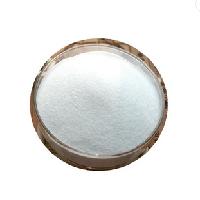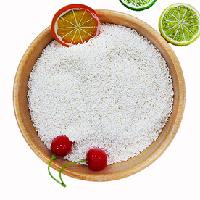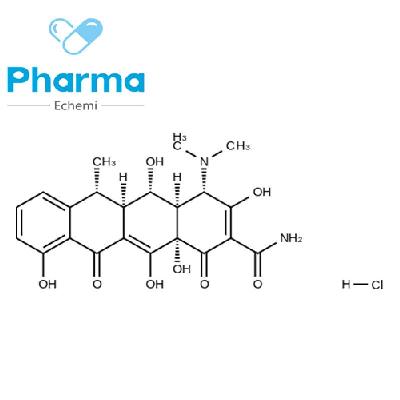-
Categories
-
Pharmaceutical Intermediates
-
Active Pharmaceutical Ingredients
-
Food Additives
- Industrial Coatings
- Agrochemicals
- Dyes and Pigments
- Surfactant
- Flavors and Fragrances
- Chemical Reagents
- Catalyst and Auxiliary
- Natural Products
- Inorganic Chemistry
-
Organic Chemistry
-
Biochemical Engineering
- Analytical Chemistry
-
Cosmetic Ingredient
- Water Treatment Chemical
-
Pharmaceutical Intermediates
Promotion
ECHEMI Mall
Wholesale
Weekly Price
Exhibition
News
-
Trade Service
Recently, the research group of Zhai Qiwei of the Shanghai Institute of Nutrition and Health, Chinese Academy of Sciences, published a research paper
entitled High-protein diet prevents fat mass increase after dieting by counteracting Lactobacillus-enhanced lipid absorption in Nature Metabolism 。 The study used ten different dieting models to find that the termination of dieting led to rapid accumulation of body fat and obesity; In this process, the rapid increase of intestinal lactobacilli and metabolites and the promotion of intestinal lipid absorption are the key causes of rapid fat accumulation and obesity.
High-protein dietary interventions or specific antibiotic treatments are effective in reducing body fat gain and obesity
after the cessation of dieting.
Nature Metabolism published a special review
in the same issue entitled A high-protein diet prevents weight regain.
Dietary restriction (DR), also commonly known as dieting, is a common dietary intervention to control weight and reduce body fat through dietary restriction
.
Whether fat or thin, whether teenagers or middle-aged and elderly, there is a large proportion of weight control or weight loss through dieting, and at the same time, the proportion of people with normal weight dieting is increasing
.
However, more studies have shown that dieters are less able to maintain the weight they have lost and often face the problem
of rapid body fat rebound.
It is important
to dissect the key mechanisms of body fat rebound after dieting and find corresponding intervention strategies.
In addition, environmental factors and genetic factors that affect the body's energy homeostasis may lead to obesity
.
However, the factors that contribute to obesity among environmental factors require further study
.
To explore the mechanism of body fat rebound after dieting, the study designed up to 10 different types of mouse dietary restriction patterns, including equal or gradient increments or decreases for 3 consecutive days to eat a total of 2 days or 1 day less food, 2 consecutive days to halve the amount of food per day, 2/3 of the amount of food consumed per day for 6, 12, or 24 consecutive days, and 30 consecutive days of alternate-day fasting
.
Studies have found that these dietary restrictions can significantly reduce body fat content
.
However, once the liberal diet was restored, the body fat content of mice increased rapidly, and could reach about twice the initial body fat content, accompanied by the accumulation of white lipid droplets from brown adipocytes and hepatic steatosis
.
Further, the study found that the amount of food intake after dieting increased, but after controlling the amount of food intake after dieting to the normal dietary level, there was still a rapid increase in body fat to nearly twice the phenomenon, indicating that the increase in food intake after diet was not the main cause of
obesity after dieting.
In-depth studies have shown that intestinal lipid absorption is significantly enhanced after the termination of dieting, along with increased lipid anabolism in adipose tissue and decreased total lipid oxidation, which leads to rapid accumulation
of body fat content after dietary restrictions.
In order to explore effective nutritional intervention strategies, researchers conducted non-targeted metabolomic analysis of blood and found that differential metabolites were concentrated in protein digestion and absorption, amino acid metabolism and amino acid synthesis related pathways
.
Therefore, after dietary restrictions, the researchers provided mice with normal protein, high-protein, low-protein diets, and diets
that added essential amino acids to normal protein.
The results showed that the high-protein diet could effectively inhibit the rapid increase of body fat content after dietary restriction, and even maintain the body fat reduction effect of dietary restriction, and avoid the accumulation of white fat droplets of brown fat cells and liver steatosis
.
At the same time, this effect is effective
for both female and male mice.
In order to exclude the effect of reduced food intake, the study of energy-paired diets using normal protein feeds or high-fat feeds revealed that food components (rather than calorie intake) are the main reasons
for the increase in body fat content after alleviating dietary restrictions from high-protein diets.
Further studies found that high-protein diets inhibited increased intestinal and blood bile acid levels after dietary restriction, impaired intestinal lipid absorption, reduced anabolism of white adipo tissue, and increased total lipid oxidation
.
Diet is a key factor in determining the ecology of the intestinal flora, which can affect the lipid absorption of the intestine and the lipid metabolism
of adipose tissue.
In order to further explore the mechanism of body fat rebound after dietary restriction and the resistance of high-protein diet to body fat rebound, 16S rDNA sequencing
of cecum microbiota was carried out.
The results showed that the composition of the intestinal flora of mice changed significantly after dietary restriction, and the proportion of lactobacilli increased rapidly from less than 5% before dieting to about 50%, and the high-protein diet could significantly inhibit the increase
of lactobacillus proportion.
Further, the researchers isolated and identified a lactobacillus in mouse cecal contents and named it Lam-1, and verified that Lam-1 abundance increased significantly after dietary restriction, while the proportion of Lam-1 in mice on a high-protein diet was significantly reduced
.
Studies have shown that treating mice with antibiotics highly sensitive to Lam-1 significantly inhibits the growth of Lam-1, thereby weakening intestinal lipid absorption and fatty acid intake in white adipose tissue after dietary restriction, and ultimately reducing body fat accumulation
。 Further, experiments in germ-free (GF) mice, Gnotobiotic (GB) mice, and normally bred Specific-pathogen Free (SPF) mice showed that supplementation with Lactobacillus Lam-1 or its metabolites significantly enhanced intestinal lipid absorption and fatty acid intake in white adipose tissue, leading to fat accumulation
.
In summary, the study found that many types of dieting lead to rapid fat accumulation and obesity after termination, revealing that the increase of intestinal lactobacilli and its metabolites during weight regain promotes intestinal lipid absorption and fat accumulation, while a high-protein diet or specific antibiotic treatment after dietary restriction can inhibit the growth of lactobacillus and thus inhibit intestinal lipid absorption and fat accumulation
.
The study showed that the return to a free diet after dietary restriction led to the occurrence of obesity, providing a new series of animal models
in addition to high-fat and high-sugar diets for obesity research.
At the same time, studies have proposed that targeting Lactobacillus intestinal through a high-protein diet or antibiotics to inhibit intestinal lipid absorption is an effective strategy
to prevent obesity after dieting.
The mechanism of obesity after the termination of dieting and the corresponding intervention strategies
.
Dieting leads to a substantial increase in the abundance of a type of lactobacillus (Lam-1) in the intestine, further affecting the level of the corresponding metabolite, thereby enhancing intestinal lipid absorption, and further leading to increased fatty acid intake of white fat, ultimately leading to obesity
.
High-protein diets and specific antibiotic interventions can effectively inhibit this process
.







